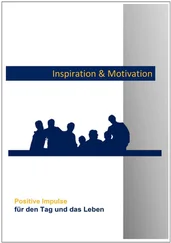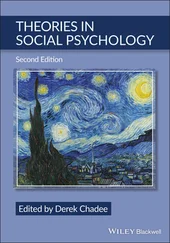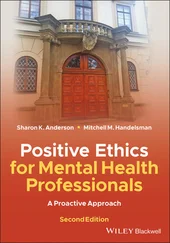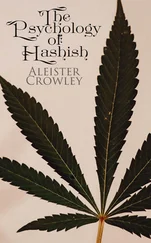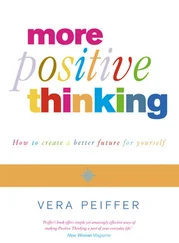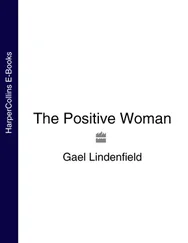29 Coke, J. S., Batson, C. D., & McDavis, K. (1978). Empathic mediation of helping: A two‐stage model. Journal of Personality and Social Psychology, 36, 752–766.
30 Damasio, A. R. (2002). A note on the neurobiology of emotions. In S. G. Post, L. G. Underwood, J. P. Schloss, & W. B. Hurlbut (Eds.), Altruism and altruistic love: Science, philosophy, and religion in dialogue (pp. 264–271). New York, NY: Oxford University Press.
31 Dawkins, R. (1976). The selfish gene. New York, NY: Oxford University Press.
32 Des Pres, T. (1976). The survivor: An anatomy of life in the death camps. New York, NY: Oxford University Press.
33 De Vignemont, F., & Singer, T. (2006). The empathic brain: How, when, and why? Trends in Cognitive Sciences, 10, 435–441.
34 De Waal, F. B. M. (1996). Good natured: The origins of right and wrong in humans and other animals. Cambridge, MA: Harvard University Press.
35 Dijker, A. J. (2001). The influence of perceived suffering and vulnerability on the experience of pity. European Journal of Social Psychology, 31, 659–676.
36 Dovidio, J. F., Johnson, J. D., Gaertner, S. L., Pearson, A. R., Saguy, T., & Ashburn‐Nardo, L. (2010). Empathy and intergroup relations. In M. Mikulincer & P. R. Shaver (Eds.), Prosocial motives, emotions, and behavior: The better angels of our nature (pp. 393–408). Washington, DC: American Psychological Association.
37 Downs, A. (1957). An economic theory of democracy. New York, NY: Harper & Row.
38 Eisenberg, N., & Strayer, J. (1987). Critical issues in the study of empathy. In N. Eisenberg & J. Strayer (Eds.), Empathy and its development (pp. 3–13). New York, NY: Cambridge University Press.
39 Figley, C. R. (2002). Compassion fatigue: Psychotherapists’ chronic lack of self‐care. Journal of Clinical Psychology, 58, 1433–1441 (Special issue on chronic illness).
40 Finlay, K. A., & Stephan, W. G. (2000). Reducing prejudice: The effects of empathy on intergroup attitudes. Journal of Applied Social Psychology, 30, 1720–1737.
41 Fisher, J. D., Nadler, A., & DePaulo, B. M. (Eds.). (1983). New directions in helping. Vol. 1: Recipient reactions to aid. New York, NY: Academic Press.
42 Fisher, R. (1994). Generic principles for resolving intergroup conflict. Journal of Social Issues, 50, 47–66.
43 Goetz, J. L., Keltner, D., & Simon‐Thomas, E. (2010). Compassion: An evolutionary analysis and empirical review. Psychological Bulletin, 136, 351–374.
44 Halpern, J. (2001). From detached concern to empathy: Humanizing medical practice. New York, NY: Oxford University Press.
45 Hamilton, W. D. (1964). The genetical evolution of social behavior (I, II). Journal of Theoretical Biology, 7, 1–52.
46 Hancock, G. (1989). Lords of poverty: The power, prestige, and corruption of the international aid business. New York, NY: Atlantic Monthly Press.
47 Hardin, G. (1977). The limits of altruism: An ecologist’s view of survival. Bloomington: Indiana University Press.
48 Harmon‐Jones, E., Vaughn‐Scott, K., Mohr, S., Sigelman, J., & Harmon‐Jones, C. (2004). The effect of manipulated sympathy and anger on left and right frontal cortical activity. Emotion, 4, 95–101.
49 Hein, G., Silani, G., Preuschoff, K., Batson, C. D., & Singer, T. (2010). Neural responses to ingroup and outgroup members’ suffering predict individual differences in costly helping. Neuron, 68, 149–160.
50 Hoess, R. (1959). Commandant at Auschwitz: Autobiography. London, UK: Weidenfeld and Nicholson.
51 Hoffman, M. L. (1981). Is altruism part of human nature? Journal of Personality and Social Psychology, 40, 121–137.
52 Hoffman, M. L. (2000). Empathy and moral development: Implications for caring and justice. New York, NY: Cambridge University Press.
53 Hrdy, S. B. (2009). Mothers and others: The evolutionary origins of mutual understanding. Cambridge, MA: Harvard University Press.
54 Isaacson, W. (1992, December 21). Sometimes, right makes might. Time, p. 82.
55 Kelly, R. L. (1995). The foraging spectrum: Diversity in hunter‐gatherer lifeways. Washington, DC: Smithsonian Institution Press.
56 Kelman, H. C. (1997). Group processes in the resolution of international conflicts: Experiences from the Israeli–Palestinian case. American Psychologist, 52, 212–220.
57 Kelman, H. C., & Cohen, S. P. (1986). Resolution of international conflict: An interactional approach. In S. Worchel & W. G. Austin (Eds.), Psychology of intergroup relations (pp. 323–432). Chicago, IL: Nelson Hall.
58 Kerr, N. L. (1995). Norms in social dilemmas. In D. A. Schroeder (Ed.), Social dilemmas: Perspectives on individuals and groups (pp. 31–47). Westport, CT: Praeger.
59 Konrath, S., Fuhrel‐Forbis, A., Lou, A., & Brown, S. (2012). Motives for volunteering are associated with mortality risk in older adults. Health Psychology, 31, 87–96.
60 Krebs, D. L. (1975). Empathy and altruism. Journal of Personality and Social Psychology, 32, 1134–1146.
61 La Rochefoucauld, F., Duke de (1691). Moral maxims and reflections, in four parts. London, UK: Gillyflower, Sare, & Everingham.
62 Lerner, M. J. (1980). The belief in a just world: A fundamental delusion. New York, NY: Plenum Press.
63 Lewin, K. (1951). Field theory in social science ( D. Cartwright, Ed.). New York, NY: Harper.
64 Lishner, D. A., Batson, C. D., & Huss, E. (2011). Tenderness and sympathy: Distinct empathic emotions elicited by different forms of need. Personality and Social Psychology Bulletin, 37, 614–625.
65 Lishner, D. A., Oceja, L. V., Stocks, E. L., & Zaspel, K. (2008). The effect of infant‐like characteristics on empathic concern for adults in need. Motivation and Emotion, 32, 270–277.
66 López‐Pérez, B., Ambrona, T., Gregory, J., Stocks, E., & Oceja, L. (2013). Feeling at hospitals: Perspective‐taking, empathy, and personal distress among professional nurses and nursing students. Nurse Education Today, 33, 334–338.
67 Luks, A. (with Payne, P.). (1991). The healing power of doing good: The health and spiritual benefits of helping others. New York, NY: Fawcett Columbine.
68 MacLean, P. D. (1967). The brain in relation to empathy and medical education. Journal of Nervous and Mental Disease, 144, 374–382.
69 MacLean, P. D. (1990). The triune brain in evolution: Role in paleocerebral functions. New York, NY: Plenum Press.
70 Maslach, C. (1982). Burnout: The cost of caring. Englewood Cliffs, NJ: Prentice‐Hall.
71 Maslow, A. H. (1954). Motivation and Personality. New York, NY: Harper.
72 McDougall, W. (1908). An introduction to social psychology. London, UK: Methuen.
73 Nadler, A., Fisher, J. D., & DePaulo, B. M. (Eds.). (1983). New directions in helping: Vol. 3. Applied perspectives on help‐seeking and ‐receiving. New York, NY: Academic Press.
74 Oceja, L. V., Heerdink, M. W., Stocks, E. L., Ambrona, T., López‐Pérez, B., & Salgado, S. (2014). Empathy, awareness of others, and action: How feeling empathy for one‐among‐others motivates helping the others. Basic and Applied Social Psychology, 36, 111–124.
75 Oman, D. (2007). Does volunteering foster physical health and longevity? In S. G. Post (Ed.), Altruism and health: Perspectives from empirical research (pp. 15–32). New York, NY: Oxford University Press.
76 Omoto, A. M., & Snyder, M. (1995). Sustained helping without obligation: Motivation, longevity of service, and perceived attitude change among AIDS volunteers. Journal of Personality and Social Psychology, 68, 671–686.
77 Paluck, E. L. (2009). Reducing intergroup prejudice and conflict using the media: A field experiment in Rwanda. Journal of Personality and Social Psychology, 96, 574–587.
78 Pettigrew, T. F. (1998). Intergroup contact theory. Annual Review of Psychology, 49, 65–85.
Читать дальше





